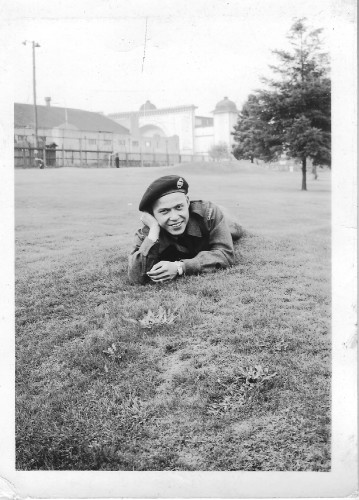
Charles (Charlie) Q. Lee was born in Vancouver in December 1923, into a large Chinese Canadian family.
He was one of many young Chinese Canadian men who, although not considered full citizens, were eager to do their part for the Allied war effort.
Lee took his basic training in Chilliwack, located in the Fraser Valley of British Columbia. He, along with several other young Chinese Canadian men, were being trained for an assignment of a lifetime – a chance to go to South East Asia and be part of Special Operations Executive – otherwise known as Force 136.
On loan to British Intelligence, Force 136 was a select group on a highly-classified mission. These young men were to be put through intensive, commando-style training and taught how to fight and survive in the harsh environment of the jungle.
Once deployed, Force 136 fighters would be parachuted behind Japanese lines. Working in small teams with no outside support, their mission was to make contact with and organize local resistance fighters and then help sabotage infrastructure and supply lines, and gather intelligence. Each of them carried a cyanide capsule in case they were captured by the Japanese.

Charlie Q. Lee – wireless operator in Force 136
Once basic training was over, Lee was sent to India (via England) for more training and it was there that he eventually specialized in wireless operations. Lee also could serve as an interpreter as he spoke Cantonese fluently.
Parachuting was a little different for wireless operators, according to Lee. Whereas all other men had two chutes when they launched out of the plane (a main chute and a backup), the wireless operator only had one parachute. That’s because “we also had to drop carrying the wireless machine. And it weighed about 25 lbs.” Once Charlie survived the jump, he then needed to haul that machine, as well as his regular pack, through the dense, humid jungle.
Lee recalled there were three things that worked against you in the jungle. “We called these challenges the “Three M”: Malaria; Morale; and the Monsoon. There were times when you realized the biggest fight was not with the Japanese … it was your personal battle with the “Three M”s and the need to survive so you could get back home.”

Force 136 recruits relax in the shade of a lorry/truck in India. Charlie Lee is on the far right.

Charlie Lee safely back home in Vancouver’s Chinatown (Jan 1946)